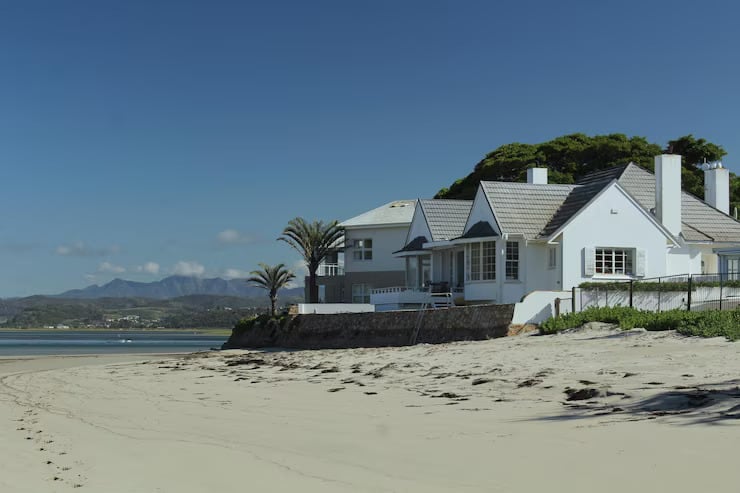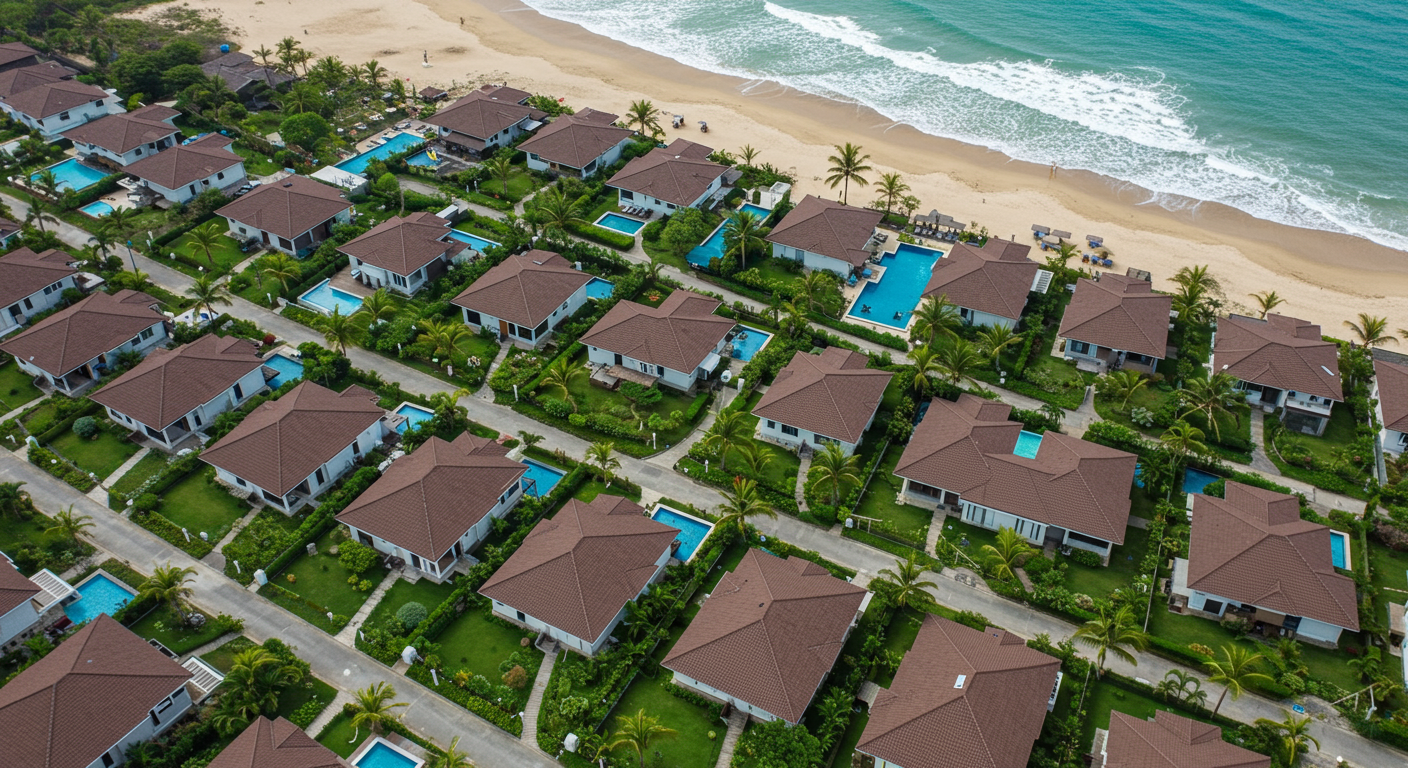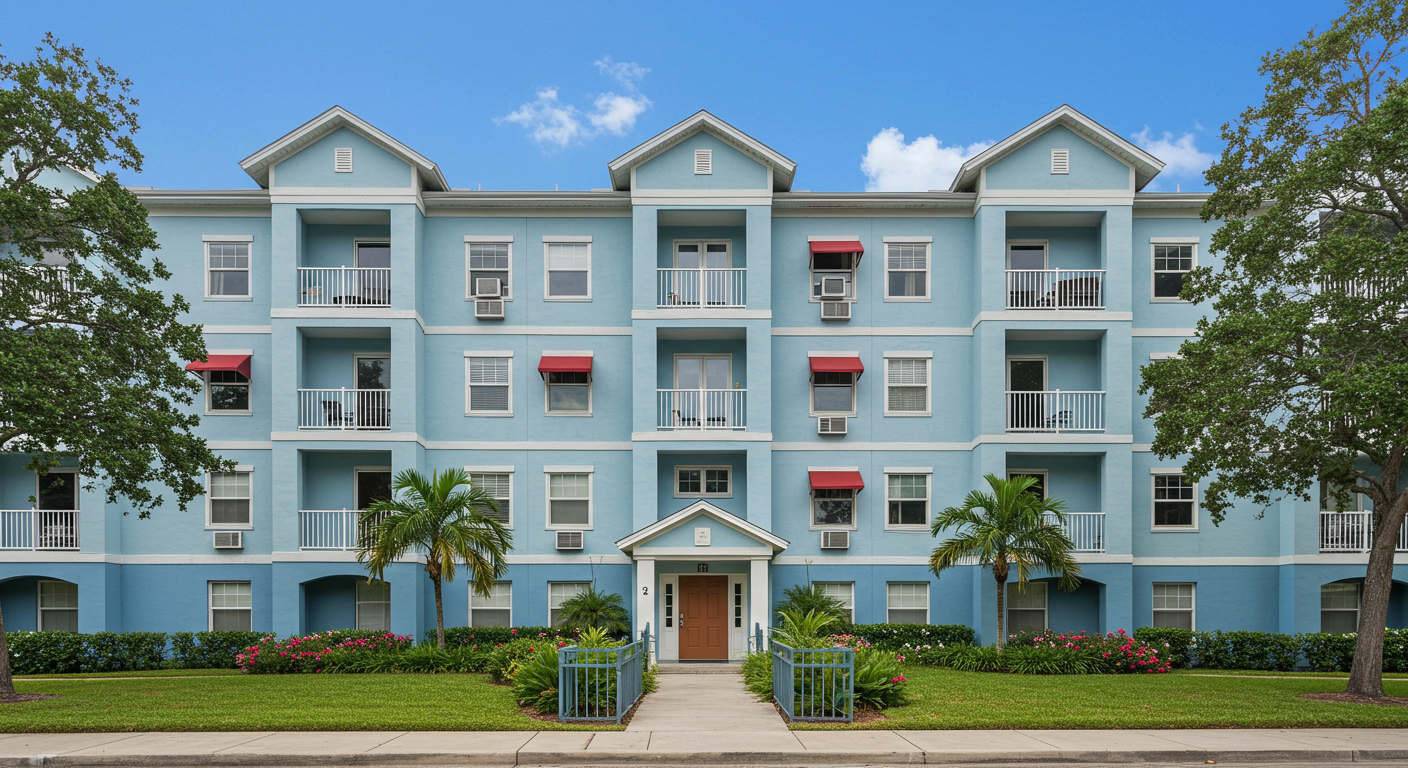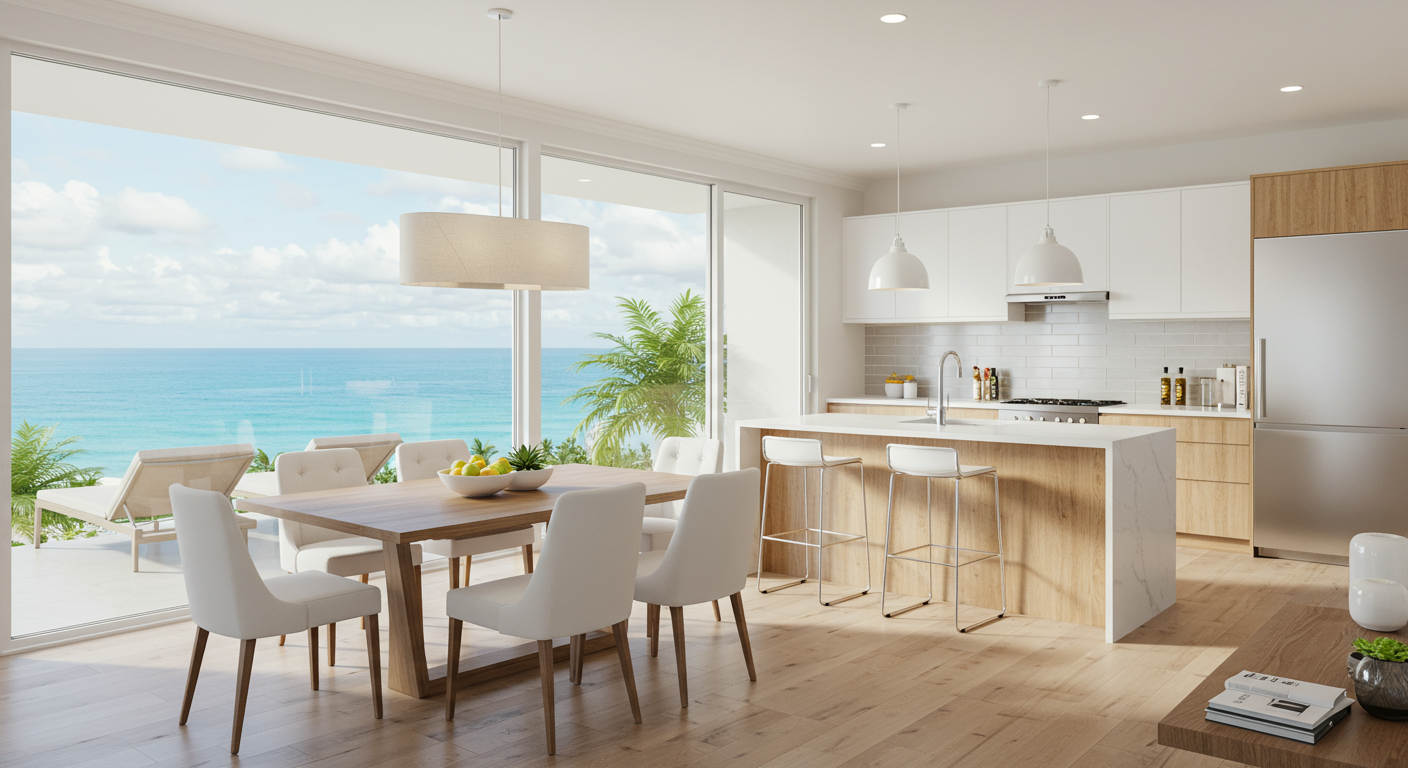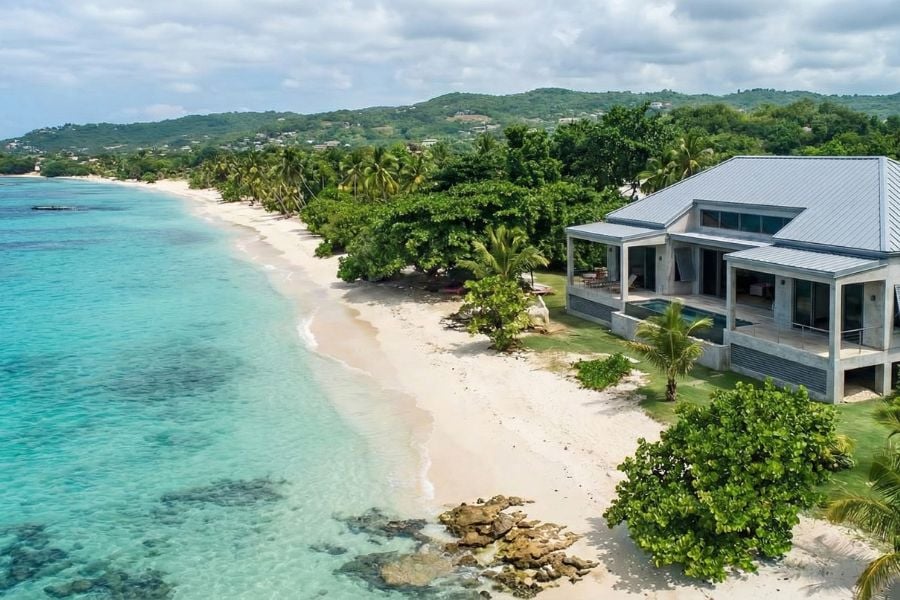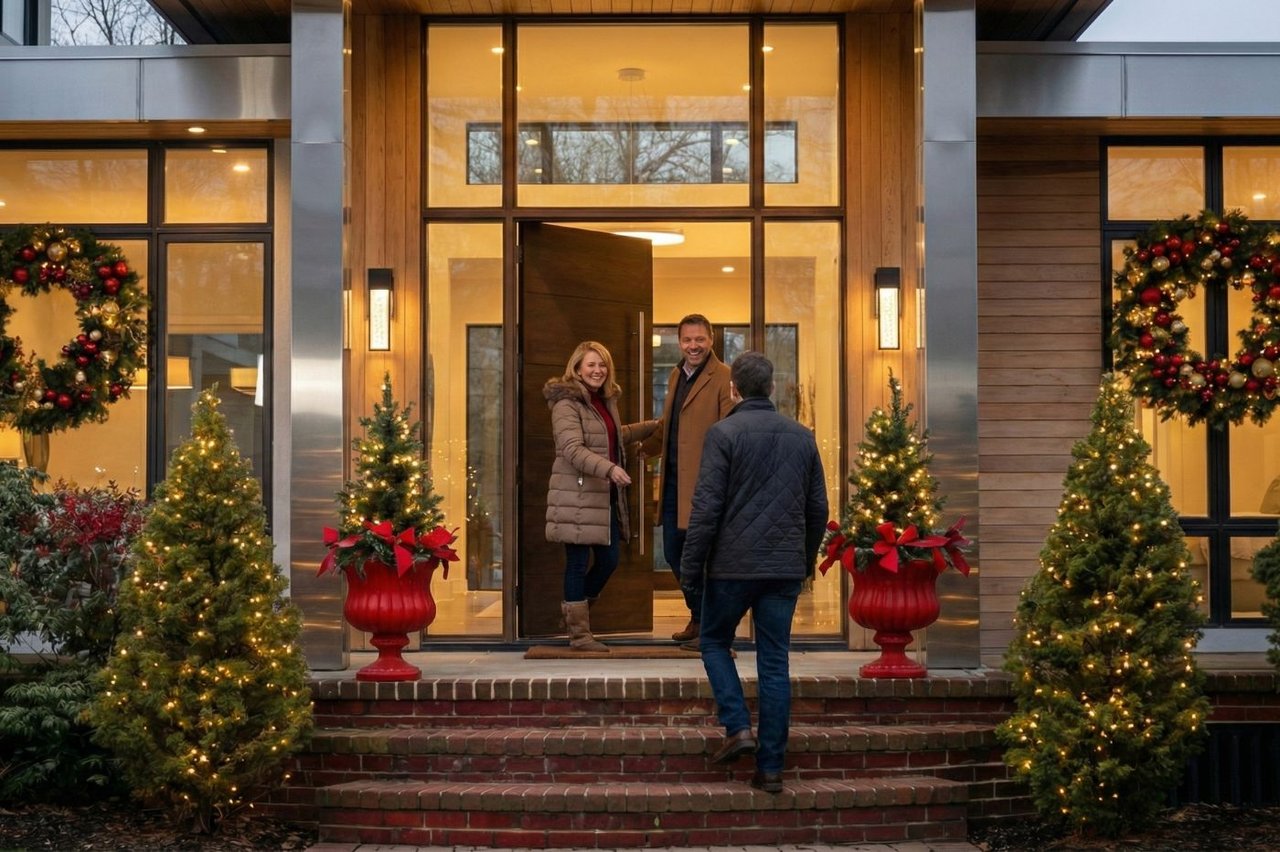In the prestigious domain of real estate investment, luxury beachfront properties symbolize opulence and desirability. However, acquiring and possessing such esteemed assets necessitates a comprehensive grasp of the costs involved. Investors must have a detailed understanding of the financial commitments required at the point of purchase and throughout the ownership tenure.
Key Takeaways
- The initial purchase price of luxury beachfront properties is significantly influenced by location, size, and exclusivity factors.
- Ownership of beachfront properties entails additional financial commitments, including higher property taxes, elevated insurance premiums, and maintenance costs.
- Regulatory and environmental considerations play a critical role in the development and upkeep of beachfront properties, impacting costs and legal obligations.
- Christie's International Real Estate Puerto Rico provides expert guidance and a curated selection of properties.
Initial Purchase Price
Beachfront properties are a pinnacle of prestige and desirability, commanding high prices that reflect their extraordinary value. The initial purchase price of these properties is influenced by a constellation of factors, paramount among them being location, size, and the exclusive nature of the property.
Location: The Paramount Factor
The location of a property significantly dictates its market value. Beachfront properties, by their nature, are limited in availability and highly sought after, which inherently drives up their cost:
|
Location Aspect |
Description |
Impact on Market Value |
|
Pristine Beach Conditions |
Properties located on clean, well-maintained beaches with clear waters and fine sand. |
Significantly increases value due to the high demand for clean, attractive beachfronts. |
|
Breathtaking Views |
Beach homes offering unobstructed, panoramic views of the ocean, especially those with sunset or sunrise vistas. |
Enhances value through the unique aesthetic and emotional appeal of expansive ocean views. |
|
Accessibility to Luxury Amenities and Services |
Proximity to high-end facilities such as spas, golf courses, exclusive clubs, and gourmet restaurants. |
Increases value by offering a lifestyle of convenience and luxury, appealing to affluent buyers. |
|
Proximity to Urban Centers |
Being close to cities provides convenient access to a broader range of services, including shopping, dining, and entertainment options. |
Raises value by combining the tranquility of beachfront living with urban convenience. |
|
Nearby International Airports |
Accessibility to international airports makes travel easier, especially for property owners who live abroad or travel frequently. |
Boosts value by ensuring easy access for international buyers and frequent travelers. |
|
Renowned Tourist Destinations |
Locations that are popular with tourists for their natural beauty, cultural significance, or recreational offerings tend to have higher property values. |
Increases value as these areas are often more developed and sought after for their amenities and attractions. |
Size and Architectural Grandeur
The size of the property, both in terms of land and the built structure, plays a critical role in determining a beach house cost. Larger estates with expansive beachfronts, multiple living spaces, and luxurious amenities such as private docks, swimming pools, and landscaped gardens command premium prices.
Exclusivity: A Mark of Distinction
Exclusivity is another pivotal factor that elevates the price of luxury beachfront properties. Properties located in gated communities or private islands, offering unparalleled privacy and security, are highly coveted. The unique character of a property, such as historical significance, celebrity ownership, or architectural renown, can also add to its exclusivity and, by extension, its market price.
Property Taxes and Insurance
The privilege of owning a luxury beachfront property comes with specific financial considerations, particularly in terms of property taxes and insurance premiums. The prime locations and heightened risk of natural disasters associated with these properties necessitate a closer examination of the ensuing costs and strategies for managing them.
Elevated Property Taxes
Luxury beachfront properties, by virtue of their coveted locations, are often assessed at higher values, leading to proportionately higher property taxes. Local jurisdictions determine tax rates and can vary widely, influenced by the property's valuation and the area's funding requirements for public services. These taxes fund essential services such as emergency response capabilities, crucial in beachfront areas prone to natural disasters.
Insurance Premiums in High-Risk Areas
Insurance costs for beachfront properties are elevated due to the increased risk of natural disasters such as hurricanes, floods, and erosion. Insurers calculate premiums based on the likelihood of these events and the potential cost of claims. Consequently, beachfront property owners often face higher insurance premiums to cover less prevalent risks in other locations.
To mitigate these costs, property owners can take several steps:
- Risk Assessment: Conduct a thorough risk assessment to understand the specific threats to the property. This assessment can inform which insurance coverages are essential and which could be adjusted to property management costs.
- Improvements and Mitigations: Investing in property improvements that mitigate risk, such as hurricane-resistant windows, elevation of structures, and proper landscaping, can lead to lower insurance premiums.
- Shop Around: Obtain quotes from multiple insurance providers to compare coverage options and costs. Some insurers specialize in high-risk properties and may offer competitive rates for comprehensive coverage.
- Higher Deductibles: Opting for a higher deductible can lower the premium cost. Property owners should balance the potential savings against the risk of covering a larger portion of the costs in the event of damage.
Maintenance and Upkeep Costs
Ownership of beachfront luxury properties is accompanied by unique maintenance challenges that necessitate higher upkeep and financial outlay. The idyllic setting of a property adjacent to the sea also exposes it to environmental factors that can accelerate wear and tear, such as:
- Corrosion
- Moisture Damage
- Sand Erosion
This necessitates diligent maintenance to preserve both its aesthetic appeal and structural integrity.
Strategies for Maintenance and Budgeting
To effectively manage the maintenance needs of beachfront properties, property owners should consider the following strategies:
- Preventive Maintenance: Adopting a proactive approach to maintenance can prevent minor issues from escalating into major repairs. Regularly scheduled inspections and maintenance activities, such as painting, sealing, and replacing worn-out parts, are essential.
- Use of Durable Materials: When repairs or renovations are needed, choosing materials resistant to corrosion and moisture can reduce long-term maintenance costs. Stainless steel, galvanized metal, and treated wood are examples of materials that offer enhanced durability in beachfront environments.
- Expert Consultation: Engaging with professionals specializing in coastal properties can provide valuable insights into the best practices for maintenance and selecting appropriate materials and technologies to protect the property.
- Budgeting for Upkeep: Given the elevated maintenance requirements, property owners should allocate a higher percentage of the property's value annually to maintenance and repair budgets than inland properties. A contingency fund for unexpected repairs can also mitigate the impact of unforeseen issues.
Regulatory and Environmental Considerations
The acquisition and development of beachfront luxury properties are subject to a complex tapestry of regulatory and environmental considerations. These legal frameworks are designed to protect fragile coastal ecosystems, ensure public access to the beachfront, and minimize the impact of human activities on these natural resources.
- Zoning Laws: These regulations dictate the type and scope of development allowed in specific areas, potentially limiting beachfront properties' size or height and increasing competition and costs for available land with fewer restrictions.
- Building Restrictions: Imposed to ensure safety, preserve aesthetics, or protect natural resources, these limitations can necessitate using more expensive construction methods or materials, elevating the overall cost of development.
- Environmental Protections: Designed to safeguard coastal ecosystems, these regulations may restrict land use, require additional studies or mitigation measures before development, and lead to increased costs for compliance and long-term maintenance of protected habitats.
Additional Costs and Fees
Owning a luxury beachfront property encompasses a variety of expenses beyond the initial purchase price. Homeowners Association (HOA) fees, elevated utility costs, and the necessity for enhanced security measures represent significant financial considerations.
- Homeowners Association (HOA) Fees: Luxury beachfront properties often belong to communities with exclusive amenities maintained by HOA fees, which can be significant and cover common area upkeep and services like waste removal and security.
- Elevated Utility Costs: Beachfront properties typically face higher utility costs due to remote locations requiring alternative services and environmental conditions that increase the consumption of resources like electricity and water.
- Security Measures: The need for advanced security measures in luxury beachfront properties, including alarm systems and surveillance, contributes to higher ownership costs, alongside increased insurance premiums for comprehensive coverage.
The Investment Perspective
Acquiring luxury beachfront properties is not solely a venture into opulence but also an investment strategy with the potential for significant financial returns. Rental income opportunities and long-term appreciation have substantial implications for the cost or price of a luxury beachfront property, both from the perspectives of current valuation and future investment potential.
- Rental Income Opportunities: The capacity for generating substantial rental income from luxury beachfront properties elevates their market value, as these properties can command premium rates, particularly in high-demand areas, leading to higher initial purchase prices to reflect their income-generating potential.
- Long-term Appreciation: The expectation of long-term appreciation for beachfront properties due to limited supply and increasing demand enhances their current real estate market price, with investors often willing to pay a premium for the anticipated future growth in property value.
Comparative Market Analysis of Luxury Beachfront Property Markets
Investing in a luxury beachfront property requires a keen understanding of regional market dynamics, pricing structures, and key lifestyle offerings. Below is a comparative analysis of prominent beachfront real estate markets worldwide, helping investors align their choices with financial and lifestyle aspirations.
Key Market Comparisons
| Region | Average Price per Sq Ft | Notable Features |
|---|---|---|
| French Riviera | $2,500 | Glamorous lifestyle, celebrity appeal, exclusive resorts, yachting culture |
| Caribbean Islands | $1,200 | Tropical climate, tax incentives, resort-style living, secluded beachfront villas |
| U.S. East Coast | $1,800 | Established markets, robust infrastructure, proximity to major financial hubs |
| Southeast Asia | $900 | Emerging markets, exotic locales, growing tourism-driven demand |
Market Insights for Investors
-
French Riviera: Home to some of the most exclusive luxury beachfront properties, this region attracts high-net-worth individuals seeking prestige, privacy, and cultural richness.
-
Caribbean Islands: Ideal for investors seeking beachfront vacation homes with favorable tax structures and strong rental potential due to year-round tourism.
-
U.S. East Coast: A stable investment destination with high liquidity, particularly in markets like Miami and the Hamptons, where infrastructure and luxury lifestyle offerings are unparalleled.
-
Southeast Asia: A cost-effective entry point for luxury beachfront property investments, with high appreciation potential in destinations like Thailand, Bali, and the Philippines.
By understanding these market distinctions, investors can strategically select a luxury beachfront property that aligns with both their financial goals and lifestyle aspirations.
Best Picks to Start Your Investment Venture
If you're prepared to embrace the luxurious lifestyle you've always dreamed of, along with the investment it entails, then this handpicked selection from Christie's International Real Estate Puerto Rico is bound to captivate you:
1360 ASHFORD AVENUE Unit: 304 , SAN JUAN, PR 00907
Experience unparalleled luxury living in this fully furnished rental property, a 1200 sq ft apartment in Condado. With breathtaking ocean views from the balcony, a one-block distance to the beach, and proximity to the finest local amenities, this property offers a seamless blend of comfort and sophistication in the heart of Puerto Rico.
330 RESIDENCES AT ESCORIAL #330, CAROLINA, PR 00987
Discover unparalleled convenience and privacy in this 2075 sq ft recently renovated penthouse at The Residences at Escorial. Enjoy the expansive 800 sq ft rooftop terrace with panoramic views, complemented by community amenities such as a pool and playground. This ensures a perfect blend of comfort, recreation, and modern living for families.
8 CALLE RODRIGUEZ SERRA #6B, SAN JUAN, PR 00907
Discover the pinnacle of luxury in this 2080 sq ft, 3-bedroom, 2-story ocean-view apartment in El Rey Condominium, located steps from the beach and the vibrant heart of Condado. Embrace modern design within this meticulously crafted residence, offering an expansive living area and unique ambiance, with an HOA of $517.37 and insurance of approximately $2,800.
Conclusion
Understanding the high cost of luxury beachfront properties requires navigating a complex landscape of initial purchase prices, location desirability, maintenance costs, and regulatory considerations, among others. At Christie's International Real Estate Puerto Rico, we excel in guiding our clients through this intricate process, offering unparalleled expertise in purchasing, selling, and renting these prestigious assets.
Whether you're seeking a property that offers opulent living, significant rental income potential, or long-term value appreciation, we are dedicated to realizing your investment goals with precision and sophistication. Contact us today to embark on your journey toward owning the beachfront luxury property of your dreams.
Related Articles:
- How Much Are Closing Costs of Puerto Rico Real Estate?
- Cost of Renting and Key Insights in Puerto Rico Real Estate
- Understanding the Cost of Living in Puerto Rico: A Comprehensive Guide
FAQs
What are the long-term financial benefits of investing in luxury beachfront properties despite the high costs?
Despite the high initial costs and ongoing expenses of owning luxury beach houses, several long-term financial benefits can make these investments attractive. First, these waterfront properties often experience significant appreciation in value over time due to their limited supply and high demand among affluent buyers. Additionally, luxury beachfront properties can generate substantial rental income, especially in high-demand vacation destinations, providing owners with a steady income stream.
Can renovations and upgrades significantly increase the value of luxury beachfront properties?
Renovations and upgrades can significantly increase the value of luxury beach house, making them more attractive to potential buyers or renters. Adding luxury amenities such as swimming pools, outdoor kitchens, and advanced home automation systems can further elevate a property's appeal. However, it's essential to consider the cost of these upgrades against the potential increase in property value and income generation.
It's also essential to ensure that renovations comply with local zoning laws and environmental regulations to avoid potential issues that could impact the property's value.
